Second Face - Gyeongju Branch [Tax Refund Shop] (세컨페이스 경주)
2.0 Km 0 2024-04-18
1F, 101, Gyerim-ro, Gyeongju-si, Gyeongsangbuk-do
-
ALLEY HOSTEL & GUESTHOUSE [Korea Quality] / 앨리게스트하우스 [한국관광 품질인증/Korea Quality]
2.0 Km 6 2021-03-29
12, Gyerim-ro 106beon-gil, Gyeongju-si, Gyeongsangbuk-do
ALLEY, a guesthouse located in the center of Gyeongju , is located only 3 min by foot from Gyeongju Station. Its supreme accessibility makes it a popular accommodation for backpackers in Gyeongju. There are no parking lots on the promise, but guests renting family rooms have access to parking services.
The first floor of the guesthouse has a lobby, common kitchen, luggage storage, and laundromat. The kitchen offers self-service complimentary breakfast. Visitors can make their own toasts and fried eggs to have with coffee and beverages. The second and third floors house guest rooms. The rooms available include single-occupancy rooms, double-occupancy rooms with single beds, double-occupancy rooms with bunk beds, triple-occupancy rooms with bunk beds, 4-person family rooms with bunk beds, and 4-person dormitory rooms with bunk beds. The family room supports up to five guests. All rooms are equipped with air conditioning and door locks, and have restrooms with shower facilities. Amenities include towels, soap, shampoo, hair conditioner, toothpaste, and hair dryer. Guests also have access to the third floor’s open-air terrace, and may store their luggage there even before their check-in. Daereungwon Ancient Tomb Complex lies about 10 min from the guesthouse, while Cheomseongdae Observatory and Donggung Palace and Wolji Pond can be found 20 min away.
Gyeongju Poseokjeong Pavilion Site (경주 포석정지)
2.0 Km 36450 2020-10-06
816, Namsansunhwan-ro, Gyeongju-si, Gyeongsangbuk-do
+82-54-745-8484
Poseokjeong Pavilion served as a separate palace where kings enjoyed banquets with nobles. The building no longer exists, but the abalone-shaped stone water canal still remains, speculated to have been built during the Unified Silla period although the exact year is unknown. The water canal has an estimated length of 10 meters, with a x_width of approximately 35 centimeters and an average depth of 26 centimeters. Based on Chinese writings from 353, it is said that drinking glasses were floated on the canal. One popular party game had guests creating poems before the glass had passed nine sections of the canel. Guests who could not do this had to drink three glasses. Modern research has shown that the site was not merely a place for fun, but also served as a meeting venue for the royal family, as well as for holding memorial services.
SILLA BOUTIQUE HOTEL PREMIUM [Korea Quality] / 신라부티크호텔 [한국관광 품질인증]
2.1 Km 6649 2020-12-22
200, Gangbyeon-ro, Gyeongju-si, Gyeongsangbuk-do
+82-54-745-3500, +82-54-624-3366
Silla Boutique Premium Hotel is a family-friendly hotel with children's facilities. The Premium Kids Deluxe and Premium Kids Suite Rooms are furnished with a low bed for the safety of children. The hotel has a total of 31 rooms with white and wood-toned interior. There are various room sizes such as Premium Double Bed Room for two and Premium Corner Suite Room for six. Hotel guests can bathe and use the sauna facilities in the spa SpaLux in the hotel building for free and buy everyday necessities from the 24-hour convenience store on the first floor. It’s a mere 5-minute walk from the Bus Terminal and only a 20-minute bus ride from Singyeongju Station. Most of the popular tourist destinations in Gyeongju City are within a 20-minute bicycle ride from the hotel as well.
Huewon [Korea Quality] / 휴원 [한국관광 품질인증]
2.1 Km 10427 2019-12-05
154, Chunghyoseoak-gil, Gyeongju-si, Gyeongsangbuk-do
+82-10-5651-1253
Huewon (休垣)
Huewon is a cozy hanok guesthouse located in Seoak-dong, Gyeongju. Since Gyeongju had been the capital of the Silla Dynasty for about a thousand years, Huewon is surrounded by various cultural heritage sites such as Tomb of King Muyeol, Tomb of King Jinji, and Seoakseowon Confucian Academy with a serene atmosphere.
Built in the 1970s and renovated later, Huewon started its accommodations service around 2011. Entering the gate, one can see a square-shaped courtyard giving a very bright and warm impression, in the middle of which is an old beautiful magnolia tree that is popular among visitors.
The garden is well-arranged with flower trees and bonsai trees and decorated with vintage items such as an old well and a water pump. Behind the house, the surroundings along with the low-altitude Seondosan Mountain make for beautiful seasonal scenery.
This cozy and pleasant hanok house has been well-maintained with the will and care of the owner, preserving the traditional hanok features including columns, beams, and rafters of the ceiling that show traces of time past.
The guestrooms are bright and clean with a delicate fragrance. Aside from red clay walls and clean beddings, however, there are no other additional facilities such as BBQ set because the guesthouse seeks to offer guests a quiet, healthy, and stable environment.
The guesthouse’s host, who has lived in Gyeongju for about 30 years and has engaged in promoting Gyeongju’s cultural heritages, willingly recommends to guests special travel destinations in Gyeongju and tells stories about Gyeongju.
In particular, the way to Dobongseodang Village School located behind Huewon is highly recommended by the host. Going up to the village school early morning, one is treated to a fantastic open view of Gyeongju in the fog. Moreover, Namsan Mountain, nicknamed Outdoor Museum since it is full of various Buddhist statues and towers here and there, is another recommended destination near the guesthouse.
Gyeongju Hwangnyongsa Temple Site (경주 황룡사지)
2.1 Km 21171 2021-01-29
64-19, Imhae-ro, Gyeongju-si, Gyeongsangbuk-do
+82-54-779-6100
Hwangnyongsa Temple Site is located in front of Bunhwangsa Temple in Guhang-dong, Gyeongju. During the Silla Era, the Hwangnyongsa Temple was the nation’s largest temple and housed the bulk of the country’s major Buddhist treasures.
Construction of the temple began in 553 on a field east of the royal compound under the commission of King Jinheung. The king originally planned to build a palace, but decided to build a temple instead, after receiving reports that a yellow dragon had been spotted on the building site. The temple was thus named Hwangnyongsa (Temple of Yellow Dragon) and was completed in 569, seventeen years after construction began. The temple murals featured an old pine tree drawn by Artist Solgeo. During the Silla Era, the temple was the center of state-sanctioned Buddhism.
Later, when monk Jajang was studying in China during the Tang dynasty, he came across a god as he was passing by Taihe Pond. The god said to him, “The yellow dragon, which is my eldest son, is guarding Hwangnyongsa Temple upon orders of Brahma, the Creator. If you build a nine-story pagoda upon your return to Silla, the neighboring states will surrender and pay tribute, and the royal cause will be stronger. Once the construction of the pagoda is complete, prepare a memorial service for the local gods and pardon any of the country's criminals. If you follow all I have told you, no other state will dare invade Silla.”
After this encounter, Jajang returned to Silla and convinced Queen Seondeok to build the nine-story pagoda. Master architect Abiji of the neighboring state Baekje designed the pagoda and the project was built by Yongchun and 200 men using wood and stone. The night before the columns were to be erected, Architect Abiji of Baekje dreamed of the fall of Baekje and refused to complete the project. With a peal of thunder, an old monk and a man of great strength suddenly appeared from the temple's main hall, erected the columns, and magically disappeared. Abiji was so shocked at the sight that he accepted his country’s future demise as the fate of the gods and once again restarted work on the temple. (From Samgungnyusa, the Memorabilia of the Three Kingdoms)
In the twenty-three years following the completion of the pagoda, Queen Seondeok unified the Three Kingdoms; later, numerous scholars pointed to the pagoda as a contributing factor in the unification. Of the three treasures of Silla, two were located at Hwangnyongsa Temple. The largest bell of Silla was also in the temple, but was taken away during the Mongol invasion. The highest monks of Silla preached at the temple, and many kings came to listen to the Buddhist teachings.
During excavation work in July 1969, the massive foundation stones of the sermon hall, auditorium, and pagoda were found. Eight years of archaeological excavations and studies revealed the unique layout of the temple grounds, which consisted of one pagoda and three halls; also found were 40,000 or so ancient artifacts. Though foundation stones and other structures from the bottom of the temple were identified through excavation, there are no historical clues about the temple’s upper design, making the restoration of the temple in its entirety practically impossible. The size of the temple, based on archeological findings, was about 70 acres, roughly eight times larger than that of Bulguksa Temple.
Gyeongju Jungang Market (경주 중앙시장)
2.1 Km 31617 2023-07-14
295, Geumseong-ro, Gyeongju-si, Gyeongsangbuk-do
+82-54-743-3696
Opened in 1983, Gyeongju Jungang Market is the main marketplace for Gyeongju locals. Nearly 700 stores selling clothing, oils, rice cakes, vegetables, general goods, and meat operate with some 2,000 vendors. The market is open nearly every day, with the busiest days being on those ending in a 2 or 7.
Hanok Stay Joadang [Korea Quality] 한옥스테이 조아당[한국관광 품질인증]
2.1 Km 2 2023-09-12
11, Wonhyo-ro 213beon-gil, Gyeongju-si, Gyeongsangbuk-do
+82-10-6520-5074
oadang is a private hanok stay on Wonhyoro-gil, Gyeongju, Gyeongsangbuk-do. The inside of this traditional hanok is finished with cypresswood, and guests can catch the scent of cypress and feel refreshed. There are two guestrooms, both with a queen-size bed, and one with its own bathroom. The location is great for walking and for seeing the sights of Gyeongju.
Suseokjeong (수석정)
2.1 Km 22833 2024-02-23
41 Naeri-gil, Gyeongju-si, Gyeongsangbuk-do
054-748-0835
Situated just ten minutes from the Gyeongju National Museum, Suseokjeong offers an opportunity to savor the refined culinary art of Korean table d'hote. Its signature dish is tteokgalbi jeongsik (grilled galbi patties set menu). The meal begins with warm sungnyung (scorched rice soup) served in a yugi bowl, followed by a hearty spread that includes jeonbokjuk (abalone porridge), tteokgalbi, and gungjung japchae (royal japchae). For dessert, guests can enjoy dried fruits and sujeonggwa (cinnamon punch). Nearby attractions include the Neungjitap Pagoda Site, Rock-carved Buddhas in the Tapgok Valley, and the Stone Seated Buddha in the Mireukgok Valley of Namsan Mountain.
Yongganggukbap (용강국밥)
2.2 Km 171 2021-03-20
70, Bonghwang-ro, Gyeongju-si, Gyeongsangbuk-do
+82-54-745-6446
The locals’ favorite restaurant that sells Korean-style soups. The best menu at this restaurant is rice soup. This Korean dishes restaurant is located in Gyeongju-si, Gyeongsangbuk-do.
![Second Face - Gyeongju Branch [Tax Refund Shop] (세컨페이스 경주)](http://tong.visitkorea.or.kr/cms/resource/47/2883747_image2_1.jpg)
![ALLEY HOSTEL & GUESTHOUSE [Korea Quality] / 앨리게스트하우스 [한국관광 품질인증/Korea Quality]](http://tong.visitkorea.or.kr/cms/resource/80/2707780_image2_1.jpg)
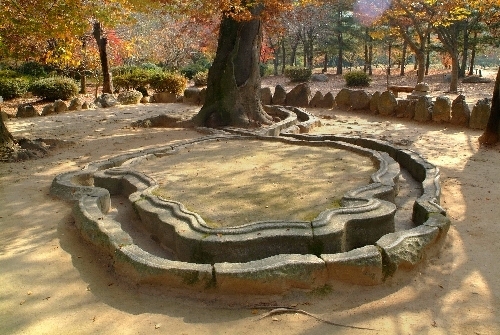
![SILLA BOUTIQUE HOTEL PREMIUM [Korea Quality] / 신라부티크호텔 [한국관광 품질인증]](http://tong.visitkorea.or.kr/cms/resource/53/2559353_image2_1.jpg)
![Huewon [Korea Quality] / 휴원 [한국관광 품질인증]](http://tong.visitkorea.or.kr/cms/resource/45/2636545_image2_1.jpg)
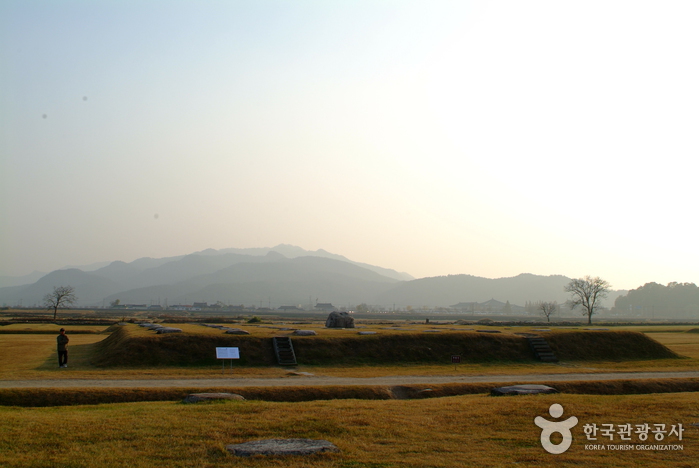
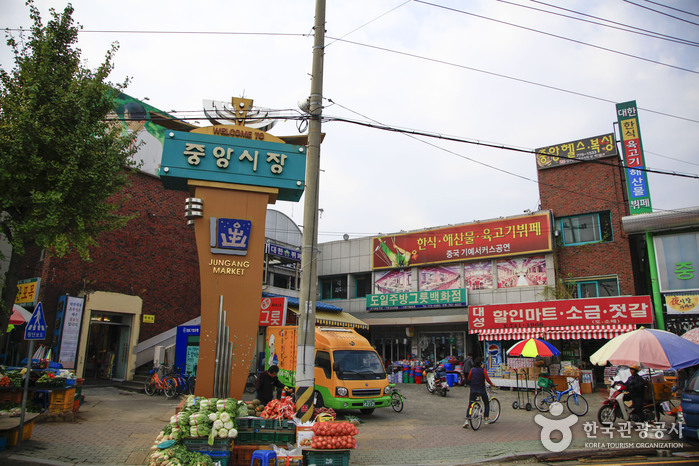
![Hanok Stay Joadang [Korea Quality] 한옥스테이 조아당[한국관광 품질인증]](http://tong.visitkorea.or.kr/cms/resource/08/3009408_image2_1.jpg)
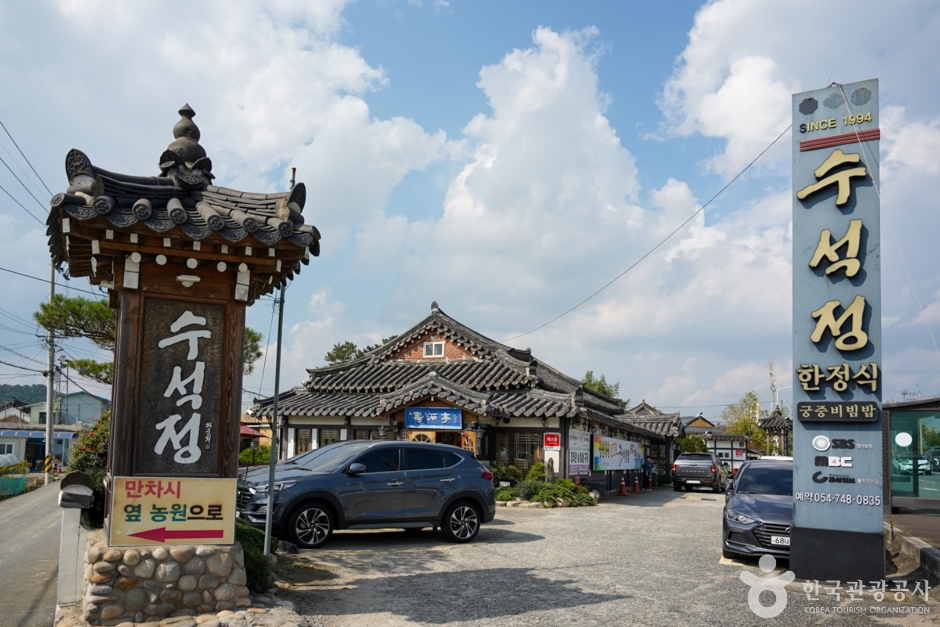
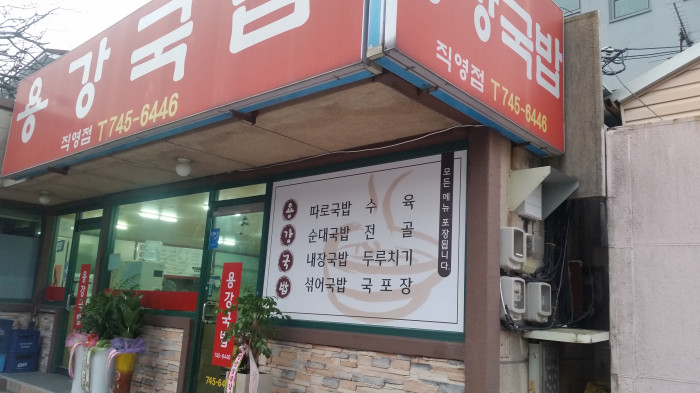
 English
English
 한국어
한국어 日本語
日本語 中文(简体)
中文(简体) Deutsch
Deutsch Français
Français Español
Español Русский
Русский